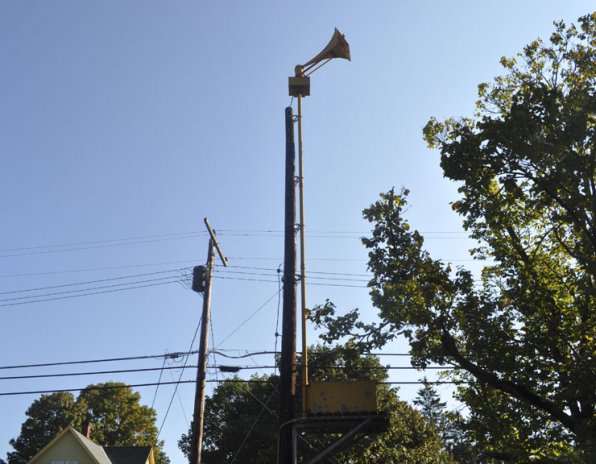The Insider was alarmed – quite literally – Monday morning while roaming in the South End of Concord when a whirring siren and ensuing announcement floated through the air. The distant but audible voice assured us it was only a test of an emergency alarm system.
But whose system was it?
Not Concord's, Fire Chief Dan Andrus said. The city still has two megaphones affixed to poles that at one time served as emergency sirens, but neither has power anymore.
“They are relics from another era,” Andrus said.
So how modern is Concord's current emergency alert system? Modern enough that Justin Bieber could receive announcements, if he were cool enough to follow @ConcordNHFire on Twitter. The department uses the social networking site to send out notifications, and did so as recently as September during tropical storm Irene.
The megaphones are set to be removed in the near future, Andres said, perhaps as early as February.
But none of that solved the mystery of where the Monday morning test came from. Certainly we weren't hearing things. Well, we were hearing things, but. . . ah, you get the picture.
Anyway, it turns out the test came from St. Paul's School. According to Tim McGinley, formerly of the Concord Fire Department and currently of St. Paul's, the school installed its own emergency alert network about five years ago and tests it about four times a year.
“It's a siren that sits in a strategic location near the central heating plant,” McGinley said. “It's intended for a campus emergency, and the intent is for the campus, or what we refer to as the community of St. Paul's, which can go beyond the actual physical boundaries.”
The sound certainly does. Monday's test was clearly audible near Rollins Park on Broadway, and McGinley said at certain times of the year the alert can be heard from his home in Bow. Though he was unsure of the specific decibel capacity, he said anyone on the roof of the central heating plant must wear ear protection at all times. But standing as little as 60 feet away can make a dramatic difference, and the sound travels differently depending on the season.
“Just a move of 10 feet can increase or decrease the decibel level significantly,” McGinley said.
The system has not been activated in an emergency during McGinley's nine-month tenure at St. Paul's, though he said it has been used in the past.
The fact that St. Paul's has access to such a system is enough for Andres, who is plenty pleased with the campus' alertness.
“St. Paul's takes very, very good care of their kids,” Andrus said.









